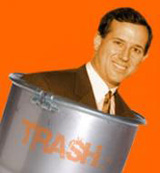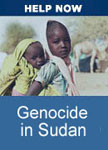US Poverty
Perhaps the single greatest problem fueling global terrorism is the vast numbers of people living in extreme poverty in the world today. This is not a definitive answer, there are a myriad of contributors to the impulse of inflciting terrorism. Wealth inequalities, however, and the immense divide between wealth and poverty, fuel that desperation that pushes toward the reactive impulse of terrorism. It is capitalized and cannibalized by terror networks; it is at tactic to manipulate the desperate and maleable.
In America, poverty is still a gigantic concern which had fallen from view in the War on Terror. It is, however, desperate. America, the richest nation in history, still maintains a population of at least 37 million who are living under the poverty line; and many many more who float close to it. Under Bush, this number has risen. And yet, we'd forgotten.
Then, Katrina. The exposure of American poverty, and more importantly, American negligence of poverty, showed the world the values which determine American actions. In fact, sadly, it showed Americans the values we've allowed to determine policy and action, and it exposed the fact that America has lost all touch with poverty, with the have-nots, with the compassion necessary for a healthy society. This was exposed brutally and sorely, and left global implications. Not only do external nations view America as being compassionate and interested in the wellfare of all: now Americans feel betrayed by our own lack of compassion.
In America, poverty is still a gigantic concern which had fallen from view in the War on Terror. It is, however, desperate. America, the richest nation in history, still maintains a population of at least 37 million who are living under the poverty line; and many many more who float close to it. Under Bush, this number has risen. And yet, we'd forgotten.
Then, Katrina. The exposure of American poverty, and more importantly, American negligence of poverty, showed the world the values which determine American actions. In fact, sadly, it showed Americans the values we've allowed to determine policy and action, and it exposed the fact that America has lost all touch with poverty, with the have-nots, with the compassion necessary for a healthy society. This was exposed brutally and sorely, and left global implications. Not only do external nations view America as being compassionate and interested in the wellfare of all: now Americans feel betrayed by our own lack of compassion.
The report coincided with Katrina, a devastating hurricane which killed more than 1,100 in Louisiana and Mississippi. Live television coverage with shocking images of the desperate and the dead in New Orleans showed in brutal close-up what the spreadsheets of the census bureau cannot convey.
SCENES SHOCKED WORLD, SHAMED AMERICANS
The images shocked the world, shamed many Americans and prompted comparisons with conditions in developing countries from Somalia and Angola to Bangladesh. The pictures from New Orleans showed poor black people begging for help. Most of the rescuers, when they finally arrived, were white.
The percentage of black Americans living in poverty is 24.7, almost twice as high as the overall rate for all races.
In predominantly black New Orleans, that disparity translated into those with cars and money, almost all white, fleeing the flood while more than 100,000 car-less blacks were trapped in the flooded city.
Some commentators wondered whether the crisis showed that political segregation, America's version of apartheid which formally ended with the 1964 Civil Rights Act, had merely been replaced by economic segregation. Poor black Americans in one part of a city, affluent whites in the other.
A host of other American cities have such divides, including Newark, Philadelphia, Detroit, Atlanta, Baltimore, St. Louis, Oakland, Miami and the U.S. capital itself. It is a 10-minute drive from the White House to the heart of Anacostia, the city's poorest neighborhood, but they could be in different worlds.
But the black-equals-poor scenes from New Orleans do not portray the full picture. There are three times as many poor whites as blacks in the United States and the poverty rate for whites has risen faster than that for blacks and Hispanics.
Academic experts also say the government's figures minimize the true scale of poverty because they are outdated. The formula for the poverty level was set in 1963 on the assumption that one third of the average family's budget was spent on food.
This is no longer true. Housing has become the largest single expense and tens of thousands of the "working poor," the label for those who work at or near the minimum wage, are forced to sleep in cars, trailers, long-term motels or shelters.
U.S. POVERTY WORST IN INDUSTRIALISED WORLD
"Every August, we Americans tell ourselves a lie," said David Brady, a Duke University professor who studies poverty.
"The poverty rate was designed to undercount because the government wanted to show progress in the war on poverty.
"Taking everything into account, the real rate is around 18 percent, or 48 million people. Poverty in the United States is more widespread, by far, than in any other industrialized country."
Poverty is a universal problem, as is inequality. The world's 500 richest people, according to U.N. statistics, have as much income as the world's poorest 416 million.
The post-hurricane poverty scenes were so remarkable for most of the world because of the perception of the United States as the rich land of unlimited opportunity.
No other country spends so much money -- billions of dollars -- to keep job-hungry foreigners out; no other country has an annual lottery in which millions of people play for 50,000 permanent resident "green cards," no other country has as many legal and illegal immigrants, all drawn by dreams of prosperity.
For many Americans they remain just that: dreams. While there are arguments over how poverty is measured -- conservatives say the census overstates it because it does not take into account food stamps and other subsidies -- there is consensus on one thing.






0 Comments:
Post a Comment
<< Home